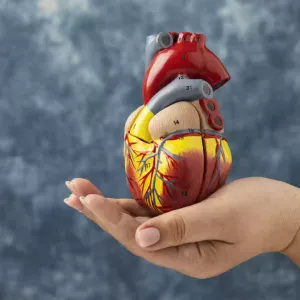

Our Review Process
Our articles undergo extensive medical review by board-certified practitioners to confirm that all factual inferences with respect to medical conditions, symptoms, treatments, and protocols are legitimate, canonical, and adhere to current guidelines and the latest discoveries. Read more.
Our Editorial Team
Shifa Fatima, MSc.
Author
Dr. Apoorva T, MHM.
MEDICAL ADVISOR
Is Bajra Good for Diabetes?
Bajra has been one of India’s most ancient millets. It is a part of our diet, alongside wheat and rice. Bajra, also referred to as bajri, bajro, kambu, and sajjalu, is a type of pearl millet that is commonly prepared as oatmeal or bhakri. Bajra dosa and bajra idli are two other variations. The grain is farmed mainly in Africa and India, and it is highly nutritious. Moreover, it is produced and eaten in various other locations worldwide. It has various health advantages and is beneficial to people with diabetes. Bajra is a gluten-free, healthy replacement for wheat; it is one of India’s extensively produced millets. Bajra roti has numerous health benefits. Also know how to get freedom from diabetes?
Table of Contents
What is Bajra?
Bajra is a grain with a lower glycemic index than wheat and rice. It slightly increases blood sugar levels compared to the other grains. It contains more fibre, which makes you feel fuller. Bajra has high protein and amino acids content that aid in building muscle and immune cells. It is rich in iron, which helps in the production of haemoglobin, avoiding anaemia. Moreover, it contains a remarkable amount of vitamin B1, which is essential for maintaining a healthy neural system. Thus, bajra is an excellent choice for people with diabetes.
Nutrients in Bajra
Bajra pearl millet is one of the millet varieties. Other varieties are Fonio, Kodo millet,
Job’s tears, foxtail, and finger millet (ragi).
Bajra is highly nutritious.
1 cup (170 grams) roasted millet has the following nutrient quality:
- 201 calories
- 6 g of protein
- 1.7 g of fat
- Carbohydrates: 40 g
- 2 g fibre
- 286 mg sodium
- 8% of the daily value for folate (DV)
- 6% of the daily value of iron
- 18% of the daily value of magnesium
- 15% of the daily value for thiamine
- 14% of the daily value of niacin
- 14% of the daily value of phosphorus
- 14% of the DV in zinc
- 11% of the daily value of riboflavin
- 11% of the daily value for vitamin B6
Cooked millet is a rich source of protein, carbohydrates, and fibre. It even contains abundant vitamins and nutrients. Millet is a healthy carbohydrate. It is gluten-free, making it a great choice for people with celiac disease, even those on a gluten-free diet.
Bajra is rich in antioxidants, polyphenols, and phytochemicals. Nevertheless, certain minerals in bajra, like zinc and iron, may not be completely absorbed by the body due to the presence of polyphenols. Also know about Indian diabetes diet.
Benefits of Bajra in People with Diabetes
- Bajra can be consumed by a person with diabetes since it has a lot of dietary fibre.
- Bajra also helps to increase good cholesterol and reduces bad cholesterol.
- It is high in antioxidants and may help in preventing some cancers.
- Bajra is beneficial for people with cardiac disorders.
- It is good for digestion, particularly in breaking carbs as it contains abundant vitamin B.
- People with celiac disease should eat more bajra.
- Bajra is a valuable addition to a diabetes diet program since it slows glucose absorption into the blood.
- It is high in phosphorus, iron, magnesium and other nutrients

Health Benefits of Bajra
Bajra is associated with numerous health benefits as it is a whole grain food, compared to other grains.
Consuming bajra regularly may help to avoid chronic diseases such as diabetes, cardiovascular disease, and some malignancies.
Moreover, eating bajra may have its own set of health advantages.
- Helps in weight loss
- Controls diabetes
- Promotes good intestinal health
- Maintains a healthy heart
- Help to prevent certain malignancies
- Provides beneficial nutrients for skin, hair and nails.
Bottomline
ajra is indeed a grassy cereal crop with smaller particle size. It is widely grown throughout Asian and African nations because it is resistant to severe conditions. Millet is a protein-rich, starch cereal. Millet is high in phosphorus and magnesium, and finger millet has the highest calcium content of any grain. Bajra is a gluten-free cereal high in antioxidants, dietary fibre, and protein. It decreases cholesterol and blood glucose levels.
FAQs
What is Bajra glycemic index?
Bajra, also referred to as pearl millet, is extensively produced in India and Africa. Bajra has a glycemic index of 54 and even a glycemic load of 6.06, making it a low glycemic load grain. It is a fantastic option for gluten-free individuals.
Does Bajra curb gastric issues?
Bajra is an alkaline food, which implies that it is an excellent option for reducing acidity. Gas buildup can cause a variety of health problems, including severe chest pain and even a burning feeling inside the stomach and oesophagus.
Is it true that Bajra raises blood sugar levels?
Bajra has high fibre content and takes longer to digest. It does not escalate the sugar levels. Thus, it is ideal in controlling blood sugar levels. Bajra has high magnesium content, which reduces the risk of diabetes.
Should we consume Bajra daily?
Many people are deemed safe when they consume sufficient quantities of bajra. People with celiac disease could eat it just because it is gluten-free.
References
- https://www.thehealthsite.com/diseases-conditions/can-a-diabetic-eat-bajra-p214-122172/
Disclaimer
This website's content is provided only for educational reasons and is not meant to be a replacement for professional medical advice. Due to individual differences, the reader should contact their physician to decide whether the material is applicable to their case.








